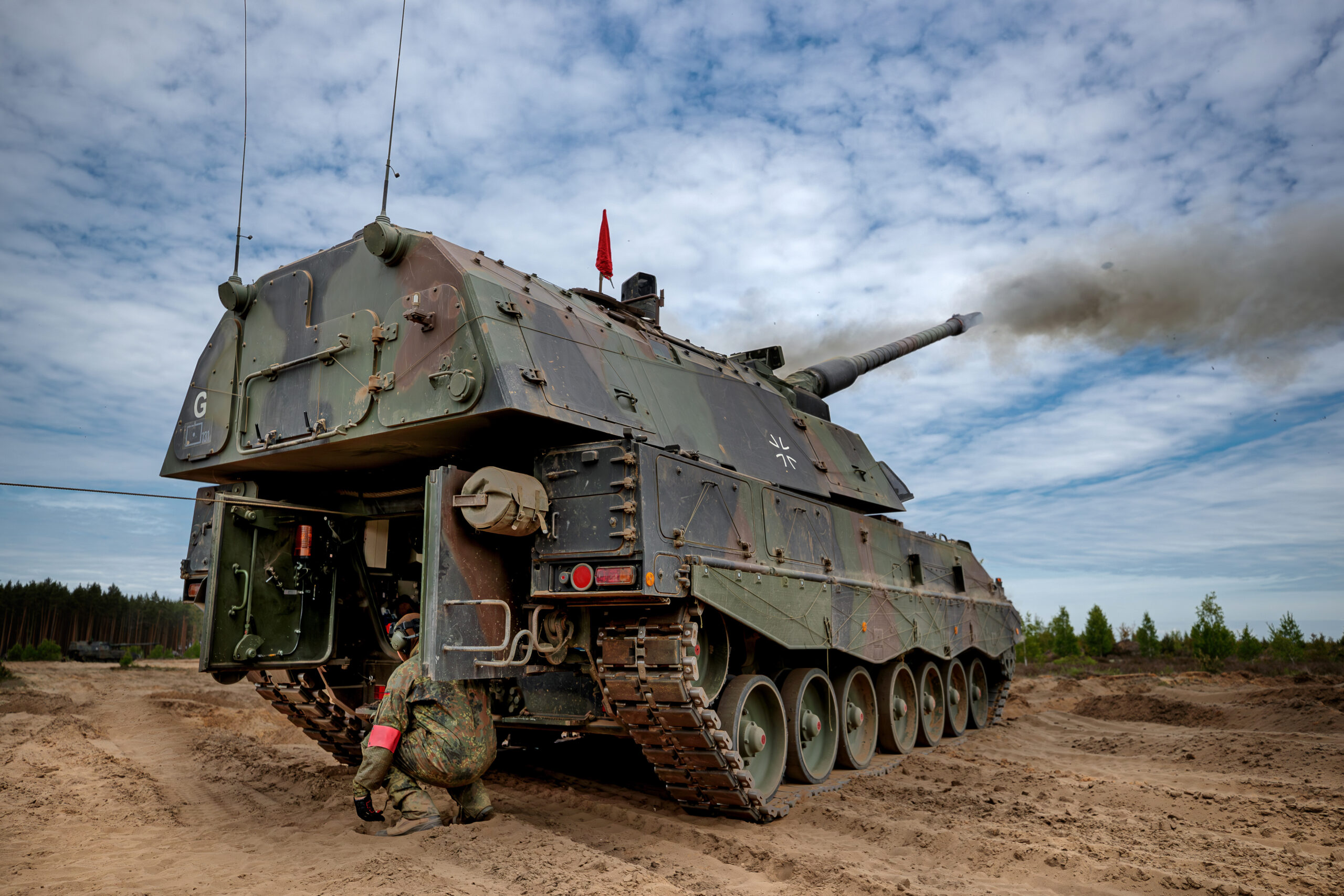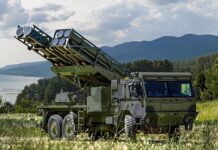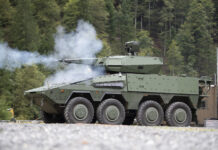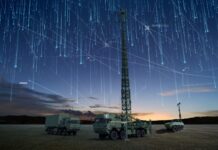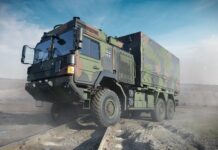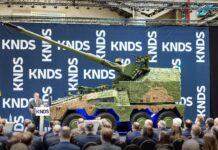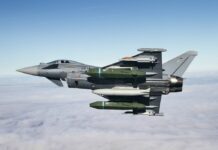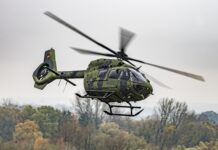With the return of war to Europe in February 2022, Germany immediately faced up to the reality of needing to bolster its long-underfunded Bundeswehr, with Chancellor Olaf Scholz setting out major defence-spending plans in his watershed ‘Zeitenwende’ (turning point) speech three days after Russia’s full-scale invasion of Ukraine. However, nearly three years on from those best of intentions, there remains debate as to how effective the Zeitenwende’s proposals have been.
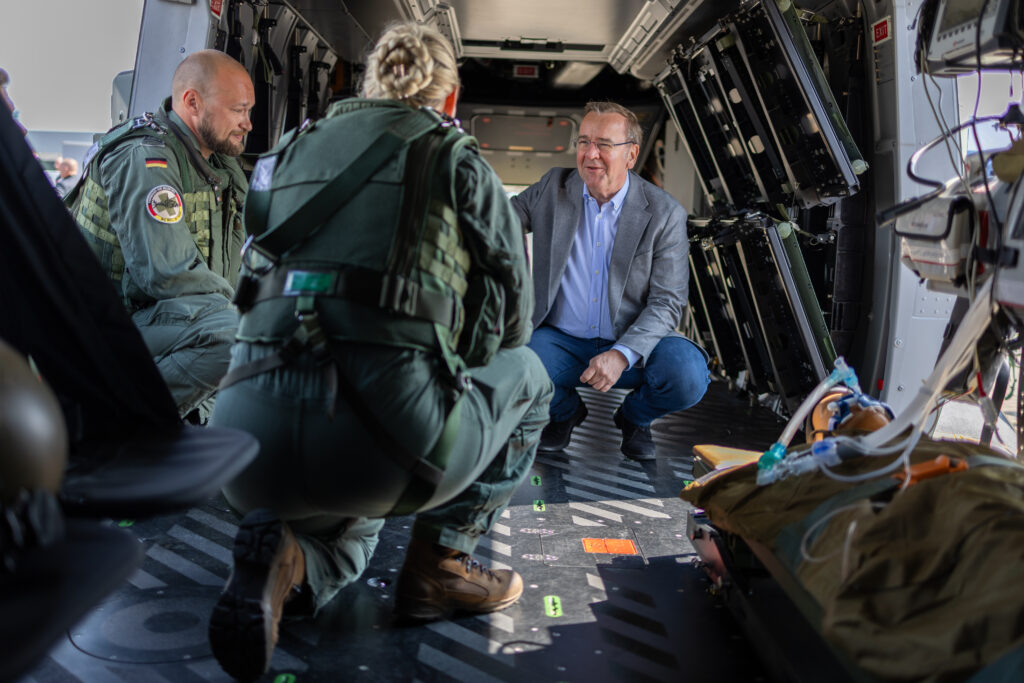
Chancellor Scholz’s announcement on 27 February 2022 of a EUR 100 billion special fund for modernising the Bundeswehr, alongside his pledge to exceed NATO’s target of 2% of GDP on defence spending, was met with domestic and international approval. This response reflected widespread political support for Germany’s stronger stance on defence in light of the growing threat from Russia.
German industry and the Bundeswehr then began to provide materiel support to Ukraine’s defenders. In those initial months, this included, among many other items, a small number of tracked, self-propelled (SP) anti-aircraft and 155 mm artillery systems, as well as multiple launch rocket systems (MLRS), to get things underway. Over the course of the following year, other platforms entered the discussion and supply chain, from main battle tanks (MBTs) to air defence systems and infantry fighting vehicles (IFVs), though some continued to be held up through political dithering and infighting, hesitation on several fronts by Scholz himself, as well as an over-cautious approach to Putin’s threatening nuclear rhetoric – a weakness shared across the Alliance incidentally.
However, despite the internal and external politicking about what major platforms – such as the Leopard 2 MBT – could, or could not, be sent to Ukraine, when and from what sources, Germany has now become the second largest contributor after the US, with equipment for Ukraine sourced from both Bundeswehr-held stocks and, to a greater extent, industry. Of kit supplied from Federal Armed Forces’ stocks, as of mid-January 2025 it has a replacement value, according to the Federal Ministry of Defence (BMVg), of some EUR 5.2 billion. While the full list of materiel overall is considerable and too extensive to include here, examples documented by the BMVg in a January 2025 statement of equipment and spares the Bundeswehr has provided from its own stocks alongside some industry-supplied units of the same, (the exact split is uncertain), includes: ammunition for Leopard 2 MBTs; 140 Marder IFVs; four PATRIOT launchers; 57 Gepard self-propelled anti-aircraft guns (SPAAGs); 372,000 rounds of 155 mm artillery ammunition; 25 PzH2000 155 mm self-propelled howitzers (SPHs); explosive ordnance disposal (EOD) materials; 90,600 safety glasses; 473 of various trucks, minibuses, all-terrain vehicles; 19,480 anti-tank mines; 60 million rounds of small arms ammunition; 6,132 camouflage nets. The federal government’s latest figure for a value to equipment already provided from both Bundeswehr and industry sources and/or committed over the coming three years, is approximately EUR 28 billion; other sources put a figure of some EUR 11.4 billion just on the value of materiel delivered until now, January 2025. Worth noting, too, more than 10,000 Ukrainian soldiers have been trained so far by Germany’s Armed Forces, with that training valued at around EUR 282 million.
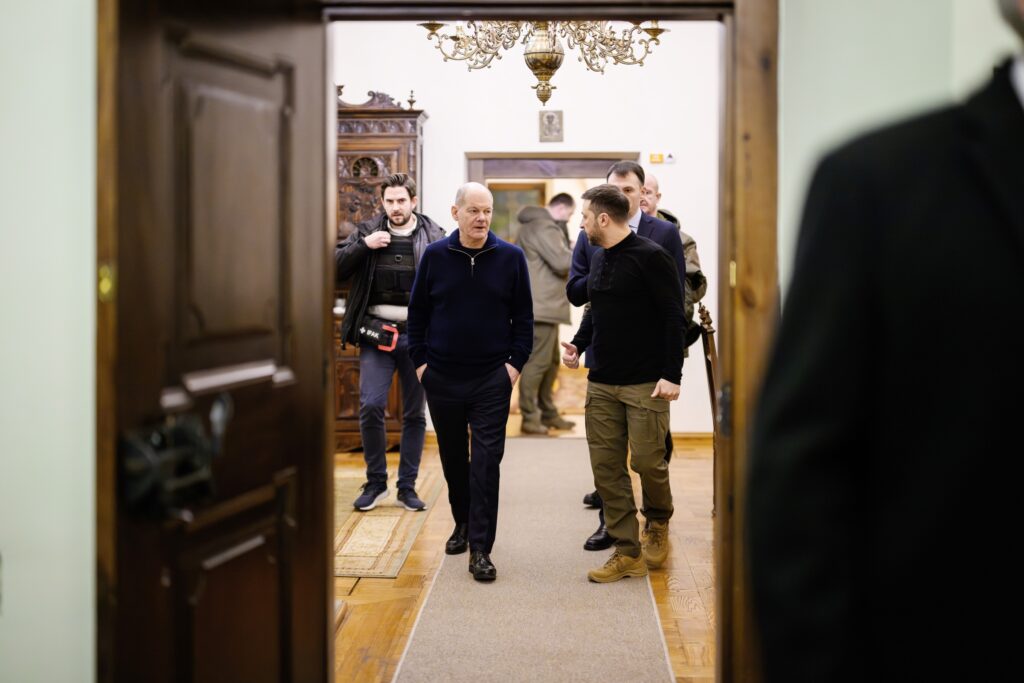
Germany’s defence budget
Meanwhile, Germany’s armed forces were allocated EUR 51.8 billion in 2024’s defence budget, which, while falling short of meeting NATO’s 2% GDP target, was bolstered by allocations from the special Zeitenwende fund; so it met, or slightly exceeded, NATO’s target. This is expected to be the case, annually, until the end of 2028. Beyond that date, however, hitting or exceeding the 2% figure will mean reverting to the regular budgetary process, as this first special fund will have expired. However, some schools of thought suggest another special fund might make sense. A Quincy Institute’s Responsible Statecraft publication on German rearmament by Molly O’Neal, published in May 2024, estimates that budgets in excess of EUR 80 billion will be required beyond 2028 if NATO’s 2% is to be consistently achieved; the author also considers it necessary to establish a second emergency EUR 100 billion special fund to support rearmament over the coming years. It’s an idea. Interestingly, front-runner in February’s election, Friedrich Merz, has claimed he could fund necessary future increases in defence spending to meet NATO’s target without a new fund and from the regular budget. It remains to be seen whether such claims are realistic.
However the rearmament of the Bundeswehr is approached, lengthy procurement processes will likely continue to delay this urgent requirement, no matter where new inventory comes from, whether from domestic sources or overseas. To illustrate this unacceptably lengthy process, O’Neal cites a two-or-more-year expected delivery timeframe for 18 replacement Leopard 2 MBTs to fill the gap left in the Bundeswehr’s inventory by those sent to the Ukrainian battlefield. So, while the Zeitenwende special fund has had some impact rearming, re-equipping, the overall process has not progressed as envisaged by Scholz in 2022; it has taken too long, with several political figures and industry analysts even deeming it to have failed.
However, despite negative views, the good news is that there’s a new strategy afoot, one intended to steer the Zeitenwende back on course, and which will impact the Bundeswehr in a significant way.
Germany’s new strategy
At the start of December 2024, Germany introduced a new ‘National Security and Defence Industry Strategy’ for the Zeitenwende. The new approach, submitted by Defence Minister Boris Pistorius and colleagues, provides a revised political and strategic way forward for the defence industry. The approach emphasises the government’s and, correspondingly, the Bundeswehr’s expectations and requirements of its domestic industrial partners, if national security and wider collective defence needs are to be met in the face of an aggressive Russia. It states: “Germany and Europe face a heightened imperative to assume responsibility for their own security and to work as strong, reliable actors in close cooperation with their international partners.”
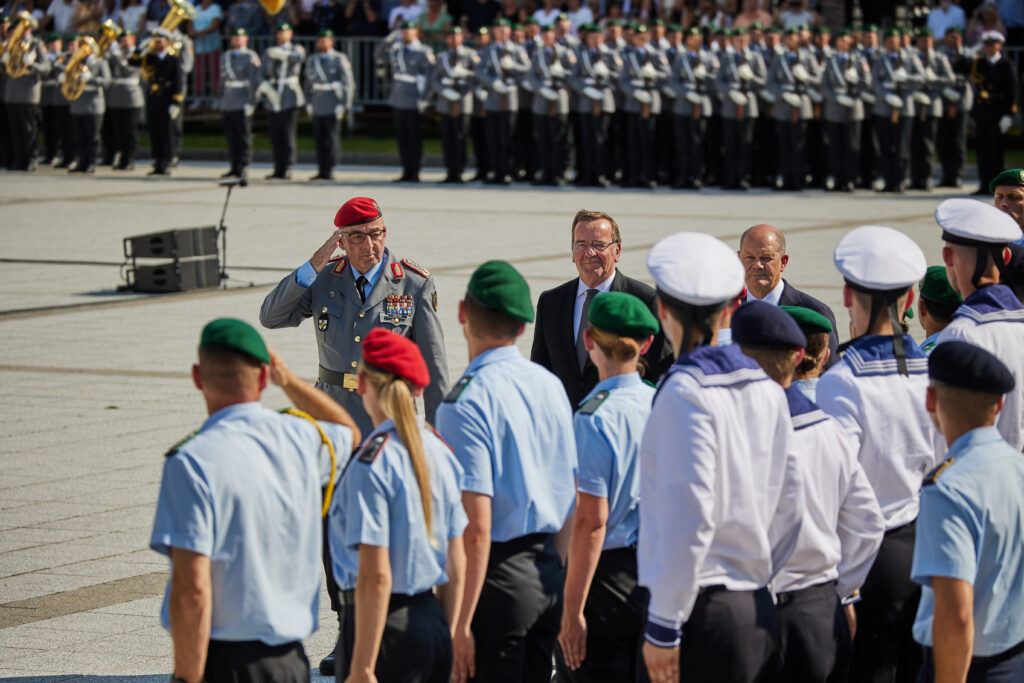
Pistorius, who stated previously that the Bundeswehr must be ‘kriegstüchtig’ (war ready), said of the new strategy: “The presence of innovative and efficient defence companies in our country is crucial for Germany’s defence capability,” adding that this was the only way advanced weapon systems could be produced in sufficient quantities, including when in collaboration with European and international allies. He also said this approach would help close NATO capability gaps in the future. Faced with the current threat situation, Pistorius said the new strategy also underlines several key technologies crucial for the Bundeswehr, which are also likely to improve and streamline effective cooperation between the BMVg, the Bundeswehr, and the defence industry as a whole. This, in turn, will enable Zeitenwende goals to be achieved faster.
That said, even in the most adverse of scenarios, the strategy document impresses that German industry must still maintain competitive pricing, while delivering the most advanced equipment possible, so the Bundeswehr and any other allied users can be assured of best products, best chances of mission success, and best pricing. In addition, as has been highlighted on the battlefields of Ukraine, industry’s ability to adapt and innovate in response to rapidly changing operational requirements and methods, is stressed in the strategy document as being crucial in giving both the German Armed Forces and its Allies an upper hand on future battlefields.
At the same time as setting out its Bundeswehr/industry/wider-world preparedness strategy, the new approach does not ignore the need for German industry and its armed forces to address sustainability, despite the war and Russia’s creeping, hybrid aggression across Europe. It impresses that fixed Bundeswehr facilities, for example, should look to alternative energy technologies and sources for its supplies, as well as for it to use synthetic, fossil-fuel alternatives, including for its operational, mission-mobility requirements. The caveat here, however, is that until such time as viable sustainable alternatives can be adopted, remaining operationally ready is the priority, so that no matter the efforts towards a sustainable Bundeswehr, established technologies, fuels, munitions, and supply chains, must be maintained and be available to ensure uninterrupted force capabilities and mobility at all times, including through the use of current propulsion systems.
One crucial requirement of the new strategy is that government customers such as the Bundeswehr must be reliable sources of funding, in order for industry to have a guaranteed order book; without this, increasing both production capacity and introducing new technological capabilities, would be unachievable.
As previously mentioned, many platforms and bits of kit from the Bundeswehr’s own stock have already been sent to Ukraine, which has only increased the need to replenish and modernise beyond the armed forces’ already much-needed revamp that existed prior to the war; Pistorius’ new strategy admits that with such urgent domestic force needs, as well as commitments to Allies beyond its own borders, the costs of doing all these things will exceed what is possible using funds from the current special fund.
New strategy’s key technologies
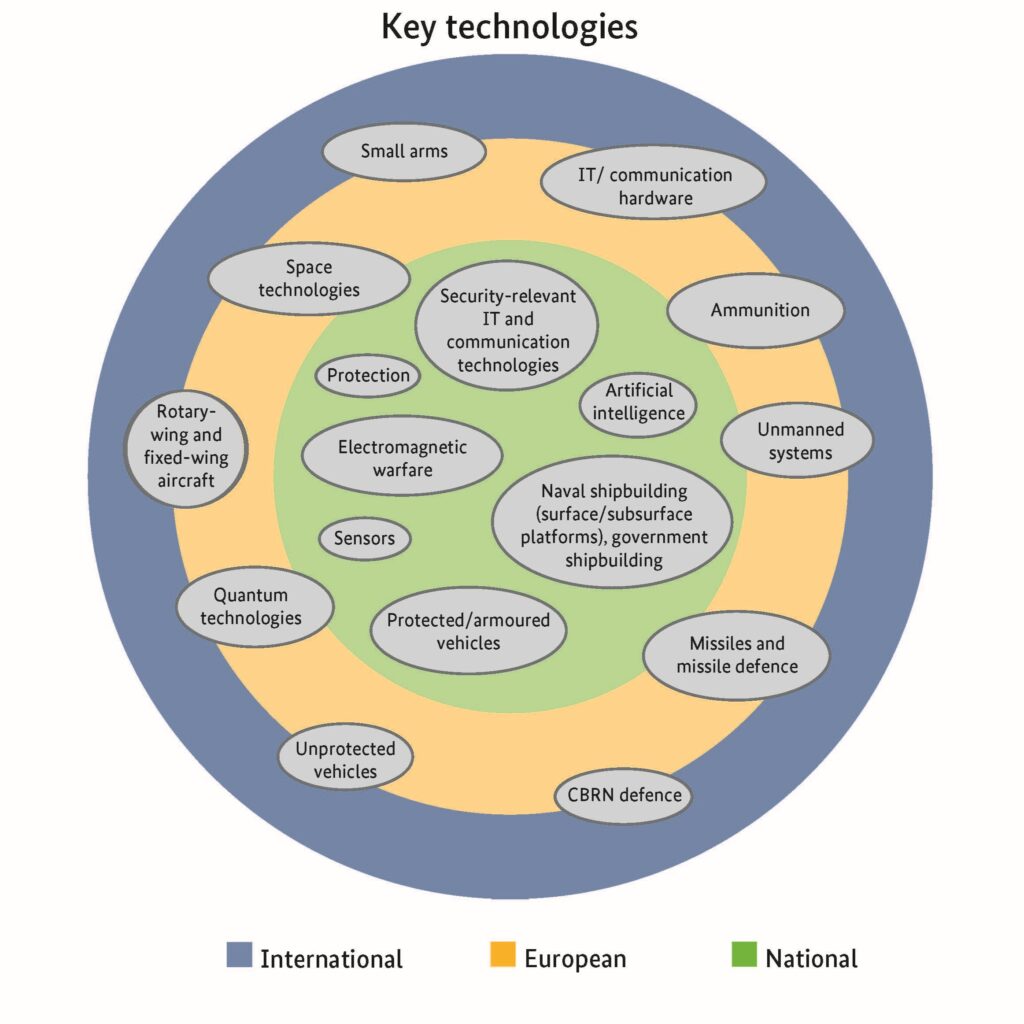
As for the technologies themselves, each has been selected on the basis of what the Bundeswehr’s ‘threat-appropriate’ capabilities need to be in the future, if it is to be operationally ready at all times and against any envisaged threats. The technologies include: military and security-relevant IT and communications; artificial intelligence (AI); surface and sub-surface naval platform shipbuilding; government shipbuilding; protected and armoured vehicles; sensor technology; defensive protection systems; electromagnetic warfare; quantum, missile and missile defence systems; as well as space technologies, ammunition of all kinds, and unmanned systems.
To ensure this new industrial strategy succeeds and all stakeholders, including the Bundeswehr, benefit as intended, related activities and cooperation across industry between all parties will be continuously monitored and coordinated by the BMVg and other industry-relevant ministries. Though time is not on Germany’s side, only time will tell how successful this new Zeitenwende strategy will be. With a federal election due on 23 February 2025, and polls indicating a likely rightward shift in Germany’s leadership, it is unclear whether or not this strategy will remain the same under new management.
Regardless of who becomes new Chancellor and setting aside rearmament and equipment, the war in Ukraine has led to a substantial movement of NATO troops to various vulnerable corners of the Alliance. For the Bundeswehr, a Zeitenwende-planned deployment of a permanent German brigade of 4,800 personnel and 200 civilian staff in Lithuania has already begun, with an advance party in-country already in 2024 to begin organising infrastructure and facilities, with a further 500 service personnel deploying at the start of 2025. More troops will arrive in 2026, as well as the command for the multi-national Battle Group in Lithuania being transferred to the German brigade HQ in Lithuania the same year. When operationally ready in 2027, this will become the largest overseas deployment of Bundeswehr troops in its history. During his trip to Vilnius in September 2024, Pistorius addressed the Lithuanian Parliament, the Seimas, calling the decision to deploy the brigade “a lighthouse project of our Zeitenwende”. It’s certainly a deployment that makes a lot of sense, interoperability-wise, as both forces already use the same Boxer armoured fighting vehicle, the same PzH2000 155 mm artillery system and, following December’s contract-signing in Berlin for the purchase of 44 Leopard 2A8s, by Lithuania’s newly appointed Minister of National Defence, Dovilė Šakalienė, they’ll soon have the same MBTs too.
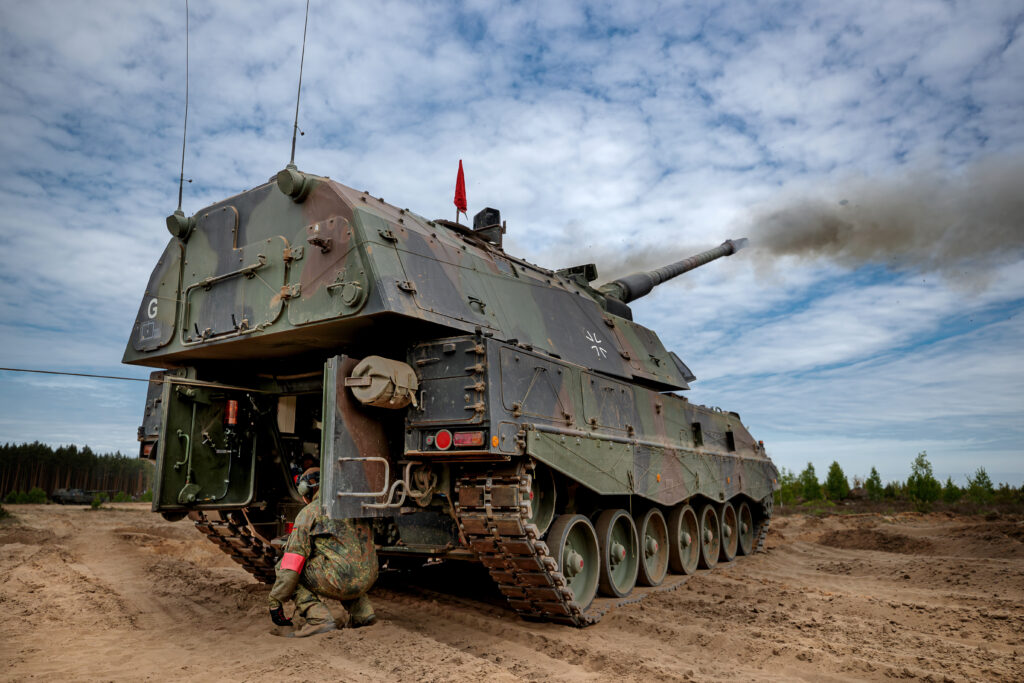
Tim Guest


